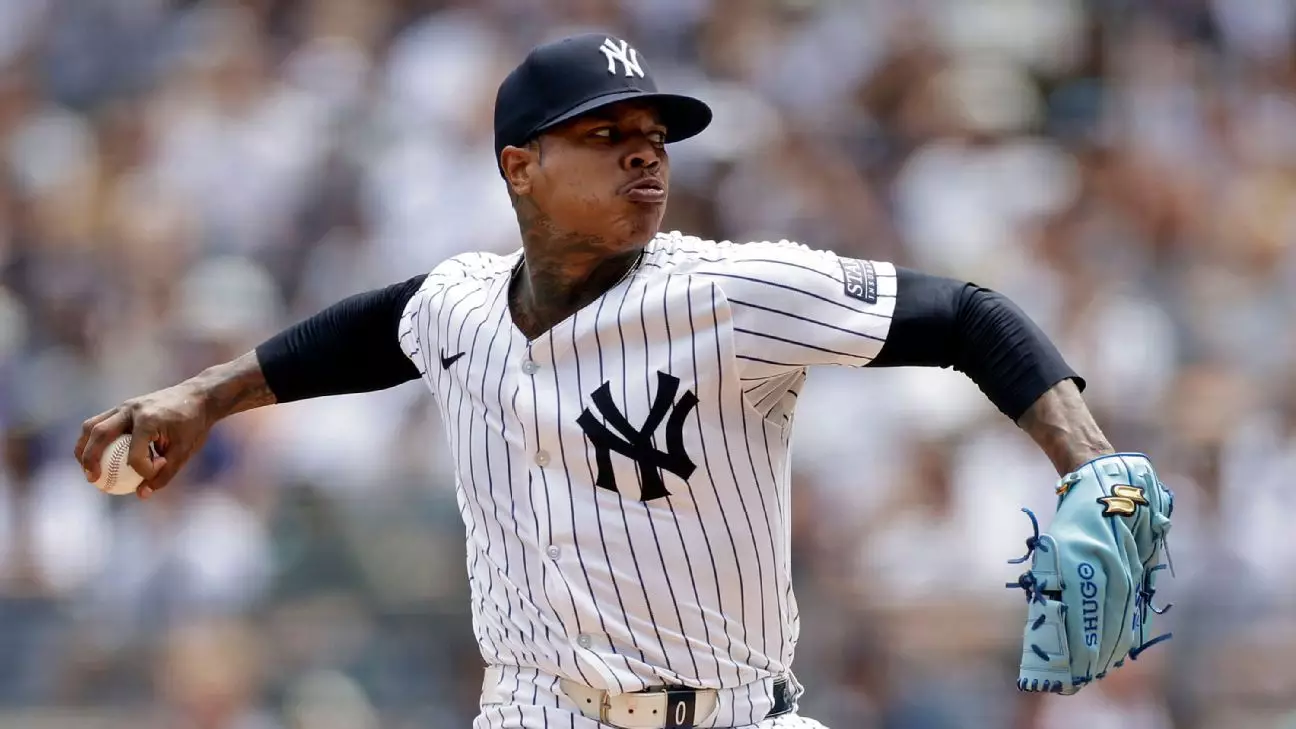When the New York Yankees inked Marcus Stroman to a lucrative two-year, $37 million deal, few anticipated a tumultuous tenure marked more by unmet expectations than by on-field dominance. The investment signaled a desire to bolster their starting rotation with a veteran pitcher capable of stabilizing the staff. Yet, from the outset, Stroman’s stint in the Bronx proved to be a compelling case of how talent alone cannot guarantee success or fit within a high-pressure franchise. His performances did not live up to the financial commitment, culminating in an exit emblematic of the tension between lofty ambitions and harsh realities.
Stroman’s journey with the Yankees embodies the peril of overconfidence in a single player’s ability to adapt quickly to a new environment. Despite his past accolades, such as being an All-Star with the Chicago Cubs earlier in 2023, his production in New York was underwhelming, with a 4.31 ERA across 30 appearances. More startling was his recent performance this season—an unspectacular 6.23 ERA over nine starts—highlighting how quickly momentum and confidence can dwindle under the relentless spotlight of one of baseball’s most scrutinizing markets.
The Frustration Behind the Numbers
Numbers seldom tell the full story, but in Stroman’s case, they underscore a narrative of unmet potential. His ERA placed him near the bottom among major league starters who have logged substantial innings over the last two seasons. His 39 innings pitched this season, falling short of the 140 innings required to trigger a vesting option for 2026, symbolize not just a lack of durability but also the inconsistency that plagued his contributions. The Yankees’ decision to release him, ultimately, was rooted in necessity more than malice; roster flexibility, emerging young talent, and the need to address critical trade deadline acquisitions overshadowed his veteran presence.
What makes Stroman’s brief Yankees journey particularly intriguing is the timing. Injuries to established starters like Gerrit Cole and Luis Gil opened opportunities for him to prove his worth early in the season. However, those opportunities were marred by health issues and underperformance, leading to his relegation from the rotation. His final appearance revealed a pitcher still grappling with command and consistency, qualities essential for a team aiming for postseason excellence. The decision to cut ties, while pragmatic, underscores the fine line between perseverance and being perceived as a liability.
The Business of Baseball and Player Disposability
The Yankees’ roster shuffling illustrates the brutal economics and strategic calculations inherent in modern baseball. Acquiring and then releasing Stroman encapsulates how teams prioritize flexibility, youth, and potential upside over veteran familiarity, especially when results fall short. The decision to release Stroman was also influenced by the addition of multiple players at the trade deadline—relievers, utilitymen, and prospects—highlighting how teams continually recalibrate their rosters based on current needs versus long-term planning.
From Stroman’s perspective, this abrupt end to his Yankees chapter underscores the fragile nature of a professional athlete’s career. His ability to secure another contract hinges on proving that he can bounce back from a disappointing stint. Earning a prorated minimum salary elsewhere will be a far cry from his previous earning power, serving as a stark reminder of how quickly fortunes can change in sports. It’s a compelling testament to the volatility players face—fame and wealth are fleeting unless sustained by high-level performance.
A Reflection on Leadership and Expectations
Beyond the numbers, Stroman’s Yankee experience reveals broader issues about leadership and expectations within a high-caliber franchise. His initial reluctance to accept a bullpen role and the “awkward” handling by team management reflected deeper communication gaps and misaligned expectations. While injuries and team needs dictated some of these dynamics, resistance from players can hinder team cohesion and strategy. Stroman’s clashes with the organizational plans underscore the importance of alignment between player ambitions and managerial vision for success.
The Yankees’ choice to move on from Stroman sends a clear message: in the ruthless landscape of Major League Baseball, performance is the ultimate currency. Past accolades, years of experience, or contract size matter little when a player fails to deliver consistently. For Stroman, this chapter might serve as a pivotal learning curve—one emphasizing resilience, adaptability, and understanding that staying relevant requires more than talent; it demands continuous evolution within a demanding franchise culture.

